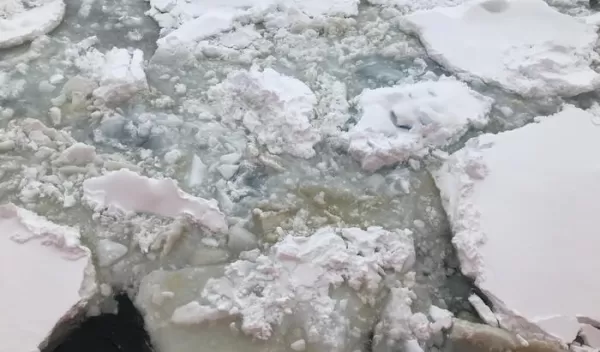
Polar experiments reveal seasonal cycle in Antarctic sea-ice algae
In the frigid waters surrounding Antarctica, an unusual seasonal cycle occurs. During winter, from March to October, the sun barely rises. As seawater freezes it rejects salts, creating pockets of extra-salty brine where microbes live in winter. In summer, the sea ice melts under constant daylight, producing warmer, fresher water at the surface.
This remote ecosystem is home to much of the Southern Ocean's photosynthetic life. New University of Washington research provides the first measurements of how sea-ice algae and other single-celled life adjust to these seasonal rhythms, offering clues to what might happen as this environment shifts under climate change.
The U.S. National Science Foundation-supported study, published in the International Society for Microbial Ecology's ISME Journal, contains some of the first measurements of how sea-ice microbes respond to changing conditions.
"This study begins to unravel the responses of organisms at the base of the food chain, of critical importance to understanding possible changes to the entire food web in response to climate change," said William Ambrose, a program director in NSF’s Office of Polar Programs.
The polar oceans play an important role in global ocean currents and in supporting marine ecosystems. Microbes form the base of the food web, supporting larger life forms.
"Polar oceans make up a significant portion of the world's oceans, and these are very productive waters," said senior author Jodi Young, a UW oceanographer. "These waters support big swarms of krill, the whales that come to feed on those krill and either polar bears or penguins. And the start of that whole ecosystem are these single-celled microscopic algae. We just know so little about them."
The tiny organisms are also important for the climate, since they quietly perform photosynthesis and soak up carbon from the atmosphere. Polar algae are especially good at producing sulfur-containing molecules that give beaches their distinctive smell and, when lofted into the air in sea spray, promote formation of clouds that can reduce penetration of solar rays.
Results revealed how single-celled algae deal with their fluctuating environments. As temperatures drop, the cells produce cryoprotectants, like antifreeze, to prevent their cellular fluid from crystallizing. Many of the most common cryoprotectant molecules were the same across different microbial lifeforms.
As salinity changes, to avoid either bursting in freshening waters or becoming desiccated like raisins in salty conditions, the cells change the concentration of salt-like organic molecules. Many such molecules serve a dual role as cryoprotectants, to balance conditions inside and outside the cell to maintain water balance.
The results show that under short-term temperature and salinity changes, community structure in each sample remained stable while adjusting the production of protective molecules. Different microbe species showed consistent responses to changing conditions. This should simplify modeling future responses to climate change, Young said.
